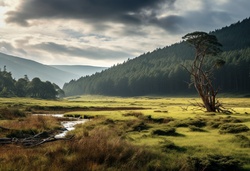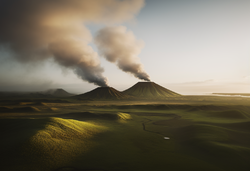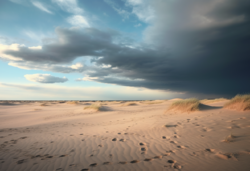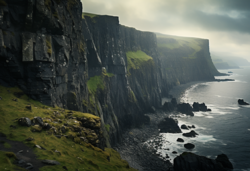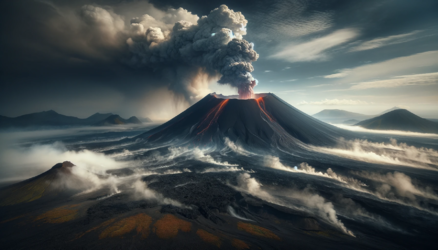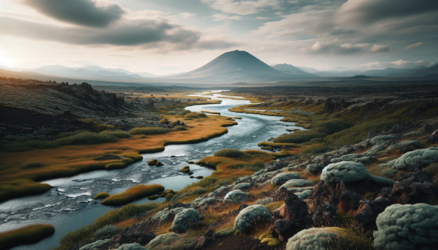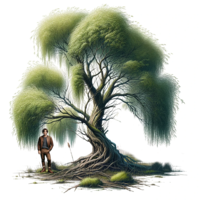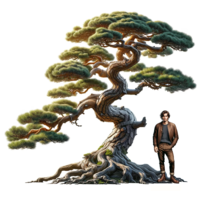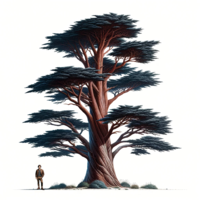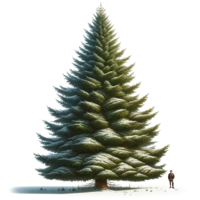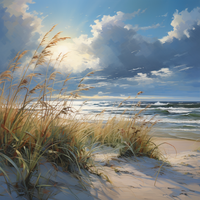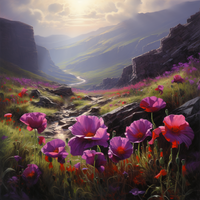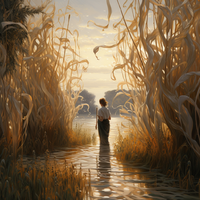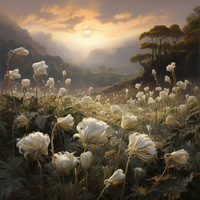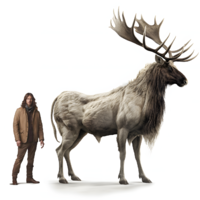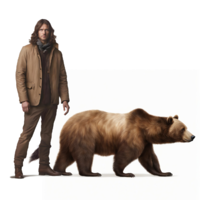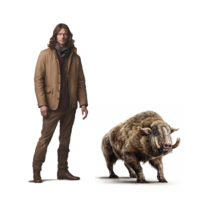Dnkluwos Islands
| Geo-area | |
|---|---|
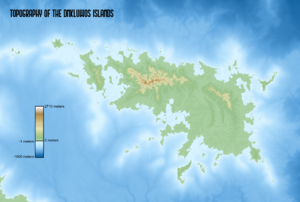 Image description: Natural landscapes of the Dnkluwos Islands | |
| Countries: | Old Dhonowlgos, Rissland |
| Continent: | Anaria |
| Location | |
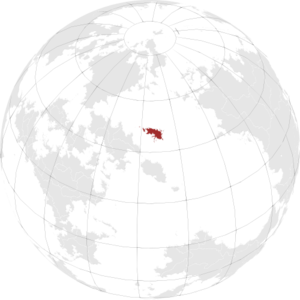
| |

The Dnkluwos Islands, an archipelago poised at the northernmost reaches of Anaria, lie just north of Stoldavia, separated by the tempestuous and stormy sea. These islands are characterized by their dynamic climate, influenced heavily by the celestial phenomenon known as the tyreal maximum and minimum. This celestial cycle has historically dictated periods of abundance and scarcity, imprinting a rhythm of life that intertwines closely with the islands' sublime natural beauty.
The largest of these islands, a land of contrasts and natural wonders, is being slowly torn asunder by a tectonic plate boundary. This geological divide has given birth to the Cinder Plains, a region marked by volcanic activity and striking landscapes. The plains are a tapestry of warm stone badlands, rivers of warm and occasionally boiling water, sporadic volcanic cones, steam vents, geysers, and frequent seismic tremors. Yet, amidst these seemingly harsh conditions, life flourishes, and the region is home to a plethora of well-adapted flora and fauna.
Since the dawn of the industrial era, the Cinder Plains have been harnessed as a source of energy. Initially exploited by the indigenous Wolgos people, and now in modern times by the Eokoesr, these plains continue to be a vital resource.
The islands' history is intricately connected to the mainland of Stoldavia. In times past, a land bridge, now submerged, linked the Dnkluwos Islands directly to Stoldavia. This bridge transformed the islands into a peninsula whose isthmus was characterized by shifting sandbars, brackish marshlands, and seasonal submersion under the shallow sea. Today, this land bridge lies over twenty meters underwater at its shallowest point, its remnants a testament to the ever-changing face of the earth. Although a hypothetical bridge to reconnect the islands to the mainland has been proposed, the area's active geological movements make such a project an unfeasible dream.
Climate
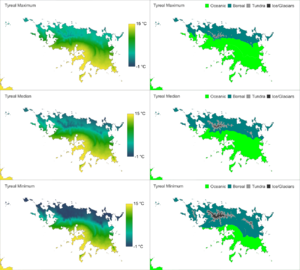
Every 36.1 years, Gotha experiences the full swing of the tyreal cycle, a climate pattern dictated by the radiative forces of a distant brown dwarf with a highly elliptical orbit. This sub-stellar object’s closest approach bathes the planet in infrared warmth, while its retreat to the furthest point cools the planetary surface, creating a stark contrast in climate, landscape, and biodiversity.
As the brown dwarf nears perihelion, the planet warms, triggering a series of environmental transformations. Temperatures peak, and the icy clutches recede from the high latitudes. The warmer period, known as the tyreal maximum, sees a reduction in glacier coverage and an expansion of temperate and boreal biomes on Dnkluwos. The median phase acts as a buffer, gradually preparing the planet for the impending cold. With the dwarf at aphelion, the tyreal minimum sets in, and temperatures drop significantly, allowing ice to form anew on the highlands, glaciers to grow and cold-adapted ecosystems to flourish.
The tyreal cycle’s influence on the islands geology is profound. During warmer phases, permafrost thaws, potentially altering the course of rivers and reshaping the valleys. Volcanic regions like the Cinder Plains may become more active due to the thawing of the ground, leading to new land formations. Conversely, the cold phase sees the expansion of glaciers, which carve the landscape anew, accentuating the ria and valleys as they retreat with the coming warmth over eons.
Plant life across the planet adapts to these shifts. The Highland Ironwood trees exemplify resilience, with their dense, damascus-patterned wood and tough leaves surviving the harsh winds and cold of the tyreal minimum. Meanwhile, the Cinder Pines and Thermal Blooms flourish in the volcanic warmth of the tyreal maximum, their existence a vivid testament to the cycle’s extremes. Coastal regions see the rise and fall of salt-tolerant trees like the Coastal Burgundy Cedar, while the more sheltered valleys nurture unique plants like the Valley Cotton.
The planet’s fauna is no less affected by the tyreal cycle. The Haiter, a giant elk, illustrates the majesty and adaptability of the planet's wildlife, thriving across the climate spectrum. During the tyreal maximum, species diversity burgeons, with animals like the Tidal Basin Marmots and Island Foxes expanding their ranges. As the minimum approaches, cold-tolerant creatures like the Highland Bears and Alpine Marmots take centre stage, showcasing the evolutionary ingenuity required to survive.
Cinder Plains
The Cinder Plains rise as a landscape sculpted by the raw forces of geology. This vast expanse, dominated by volcanic activity, is home to a resilient tapestry of life and the monumental presence of four key volcanoes: Peh2wr̥h3regs, Bhergdoru, Gwhederus, and Pl̥h1nospeh2wr̥. These volcanic sentinels, with their moderate heights reaching up to 800 meters, are the fiery heart of the region, constantly emitting steam, ash, and volcanic gases. The landscape of the Cinder Plains is characterized by the striking silhouettes of its four guardian volcanoes. Peh2wr̥h3regs, Bhergdoru, and Pl̥h1nospeh2wr̥, forming a clustered trio, stand as a testament to the geological unrest beneath the plains. Gwhederus, slightly more solitary, complements the trio with its own plume of vapors, contributing to the haunting beauty of this volcanic tableau. Each volcano possesses a distinct cone, rising from the plains with slopes that bear the scars of past eruptions. These natural monuments, with their craters and calderas, are a source of wonder and study, their activity a reminder of the planet's dynamic core.
The terrain of the Cinder Plains is a mosaic of geological features. Between the great volcanic cones, the land undulates with hardened lava flows and fissures from which the earth’s breath escapes in hissing vents and steaming fumaroles. Rivers, heated by the geothermal activity below, traverse the plains, their banks a mix of mineral deposits and thermophilic flora. Bare rock gives way to patches of tenacious mosses and grasses, and here and there, the stark forms of Cinder Pines break the horizon, their existence a defiant stand against the prevailing conditions. The vegetation zones radiate outward from the volcanoes, changing from barren volcanic rock to more life-sustaining environments as one moves away from the heat and tumult of the volcanic heartland.
The flora of the Cinder Plains has adapted to the geothermal warmth and the ash-rich soils. Mosses and lichens are the primary colonizers, creating a foothold for brackens and grasses that weave a green thread through the black and red volcanic landscape. These plants, in turn, support a range of insects and small mammals that have adapted to the Plains’ extremes.
The presence of the volcanoes dictates the rhythm of life here. The constant billowing of steam and ash from Peh2wr̥h3regs, Bhergdoru, and Pl̥h1nospeh2wr̥ creates a backdrop for the cycle of day and night, their emissions casting long shadows or glowing ominously under the sun and stars.
Flora
The flora of the Dnkluwos Islands presents a rich tapestry of diverse plant life, a testament to the archipelago's varied climates and landscapes. From towering trees in the highlands to delicate flowers in geothermal areas, each region boasts its own unique botanical wonders.
In the rugged highlands, resilient trees like the Highland Ironwood dominate the landscape. Adapted to the harsh, windy conditions, these trees are a symbol of the strength and endurance of the natural world on these islands. The highland regions are also home to a variety of berry bushes, which offer a burst of color and life in an otherwise challenging environment.
The wetlands and marsh areas of the islands are characterized by their lush, water-loving vegetation. Willows with their long, flexible branches are particularly noteworthy, playing a crucial role in stabilizing the soil and supporting a diverse ecosystem. These areas are also rich in various reed species, contributing to the unique biodiversity of the wetlands.
The volcanic regions of the Dnkluwos Islands, with their nutrient-rich soils, are a haven for specially adapted plant species. Among these are the Cinder Pines, which have evolved to survive in the heat and ash. This region is also known for its vibrant thermal blooms, adding splashes of color to the steaming landscape.
Coastal regions exhibit a different array of flora, with salt-tolerant trees and shrubs such as the Coastal Burgundy Cedar, standing tall against the ocean winds. The tide pools and sandy shores foster unique grasses and succulents, well-adapted to the saline and often fluctuating coastal conditions.
In the more sheltered valleys, one can find herbaceous plants with unique properties, such as the Valley Cotton, known for its water-resistant fibers. The diverse climatic zones of the Dnkluwos Islands, from the frosty highlands to the warm coastal areas, contribute to an incredible variety of plant life, each species playing a vital role in its ecosystem.
Overall, the flora of the Dnkluwos Islands is a vivid illustration of nature's adaptability and resilience, with each plant species intricately woven into the fabric of the islands' diverse ecosystems.
Trees
Plants and Shrubs
Fauna
The Dnkluwos Islands, a land of diverse and lush ecosystems, are home to an array of unique fauna, each species perfectly adapted to its specific environment. Central to the islands' fauna is the Haiter, a giant elk revered in Wolgos and Eokoesr culture and religion. Majestic and enigmatic, it symbolizes strength and stature with its impressive height and massive antlers. More than just a symbol, the Haiter is integral to daily life, domesticated by the Wolgos and nowadays by the Eokoesr people for use as a mount, showcasing its utility in navigating the varied terrains of the islands.
In the dense forests and rugged highlands, the Highland wolves and robust Highland Bears establish their dominion, maintaining the ecological balance. These large mammals, along with the smaller Dwarf Shrews, are essential in the health and diversity of these ecosystems.
The marshlands and wetlands buzz with life. Here, Marshland Herons wade gracefully, and Tidal Basin Marmots forage diligently. These areas are crucial for breeding birds and serve as a refuge for amphibians and insects, creating a dynamic wetland ecosystem.
The volcanic Cinder Plains contrast starkly, hosting specially adapted species like the Cinder Pines and Geothermal Snakes. This harsh environment showcases the remarkable resilience of nature.
Along the coast, the Coastal Burgundy Cedars shelter diverse bird species, while Rocky Shore Crabs play a vital role in the coastal food web. In the highlands, Boreal Spruces tower, sheltering wildlife such as the Alpine Marmots, key to the high-altitude ecosystem.
The avian life of the islands is diverse, from Cliffside Falcons to myriad gulls, each species a testament to the adaptability of life. Insect life, including the giant beetles, is integral to the forest ecosystems.
The fauna of the Dnkluwos Islands, with the Haiter at its heart, forms a complex and vibrant web of life. Each species, from the forest floor to the mountain peaks, plays a crucial role in maintaining the ecological balance of this unique archipelago, making it a showcase of the adaptability and resilience of nature.
